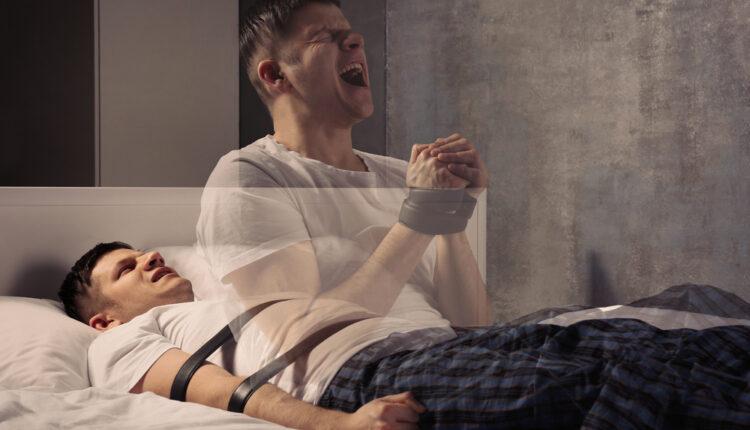One of the most intriguing medical mysteries that remain till this day is narcolepsy. Narcolepsy is a rare condition that affects a small percentage of the general population and little is known about this debilitating condition.
People who struggle with narcolepsy may fall asleep anywhere at unpredictable times. The unpredictable and spontaneous nature of this condition could potentially put the lives of the impacted individuals at risk.
Many are under the impression that narcolepsy merely entails the spontaneity of falling asleep at unexpected times. However, there is a lot more nuance to this condition and there is still room for further discoveries to uncover and dissect. With that in mind, let’s delve into the world of narcolepsy.

What is Narcolepsy?

Narcolepsy is a rare neurological disorder that affects a person’s ability to sleep and stay awake. Experts believe that it’s a chronic neurological condition that affects the nervous system.
People with narcolepsy may just fall asleep at unexpected times in the midst of any activity.
In general, narcolepsy is not considered to be a deadly disease. However, falling asleep at unexpected times may put someone in dangerous and potentially life-threatening situations. It may even lead to a person sustaining injuries if they happen to fall asleep in a dangerous situation.
Symptoms of narcolepsy often materialise between the ages of 7 and 25 years old, but can also occur at any other stage of life. In most cases, narcolepsy is not immediately recognised and this has led to this condition being misdiagnosed on multiple occasions.
Types of Narcolepsy
Narcolepsy can be categorised into two types:

Type 1
This is the most common type of narcolepsy. A person with Type 1 narcolepsy may possess a higher risk of having cataplexy after experiencing a strong emotional response such as feelings of stress, fear, or even excitement.
Cataplexy refers to the sudden loss of muscle tone which can instantaneously occur during waking hours. Those who struggle with Type 1 narcolepsy may experience episodes of extreme sleepiness and cataplexy during the day. It’s due to low levels of hypocretin in the brain.
Hypocretins are neurotransmitters and they promote wakefulness and suppress Rapid Eye Movements (REM). Normal individuals who do not struggle with narcolepsy tend to sleep well and their sleep is well regulated. Whereas, in people with Type 1 narcolepsy combined with cataplexy, a deficiency in hypocretin occurs.

Type 2
Those with Type 2 narcolepsy do not experience cataplexy. In most circumstances, people who struggle with Type 2 narcolepsy have normal levels of hypocretin. Experts also believe that Type 2 narcolepsy symptoms tend to be less serious as compared to symptoms exhibited by Type 1 narcolepsy.
Causes of Narcolepsy
Like many medical mysteries out there, the cause of narcolepsy remains unknown to experts to this day. However, that didn’t stop medical experts from theorising the potential causes.
Scientists believe the low levels of hypocretin found in Type 1 narcolepsy may be the main culprit. It is believed that many factors can contribute to the declining levels of hypocretin. One of them being gene mutations. These gene mutations are also considered to be a hereditary deficiency. This coupled with autoimmune issues, may contribute to narcolepsy.
On top of the above-mentioned plausible causes, accompanying factors such as brain trauma or injury, stress, infections, and toxins exposure may also contribute to narcolepsy.
However, the cause of Type 2 narcolepsy still remains unknown.
Like many medical mysteries out there, the cause of narcolepsy remains unknown to experts to this day. However, that didn’t stop medical experts from theorising the potential causes.
Narcolepsy Symptoms
Some symptoms of narcolepsy may materialise such as:

Hallucinations
People with narcolepsy may experience vivid dreams that can take place when falling asleep or waking up. These dreams can sometimes be frightening and they may involve more than one sense. Hallucinations that occur as you’re falling asleep are also known as hypnagogic hallucinations.
Hypnagogic hallucination is when you imagine very realistic objects or events, primarily in a visual way right before falling asleep. The experience of having vivid hallucinations right before falling asleep may cause a person with narcolepsy to wake up in immense fear or anxiety as they may think the hallucinations were real.
If one is experiencing hallucinations as they are waking up, it’s called hypnopompic hallucinations. It’s similar in nature to hypnagogic hallucinations.

Sleep paralysis
Sleep paralysis happens when one is unable to move their muscles as they are waking up. This also includes temporarily losing the ability to move or speak while falling asleep or waking up. According to experts, these sleep paralysis episodes can last anywhere from a few seconds to several minutes.
Sleep disruption and poor sleep patterns
People with narcolepsy may be excessively sleepy during the day. As a result of that, they may experience difficulties falling asleep at night. Excessive sleep time during the day is also known as EDS, which stands for Excessive Daytime Sleepiness. EDS makes it harder for people with narcolepsy to concentrate. Due to the constant strain, it can also make the impacted people depressed, exhausted and cause memory lapses.
People with narcolepsy may experience vivid dreams that can take place when falling asleep or waking up.
Risk Factors for Narcolepsy
Some risk factors of narcolepsy may encompass:
Family
If your siblings or parents have narcolepsy, it is reported that you could be 40 times more susceptible to narcolepsy as well. However, there is no concrete evidence thus far to indicate a significant percentage of narcolepsy running in the family.

Brain trauma or brain injuries
In some rare cases, narcolepsy can be caused if a specific part of the brain sustains any form of trauma or injury. The area of impact in question here is the parts of the brain that is responsible for regulating REM sleep and wakefulness.











